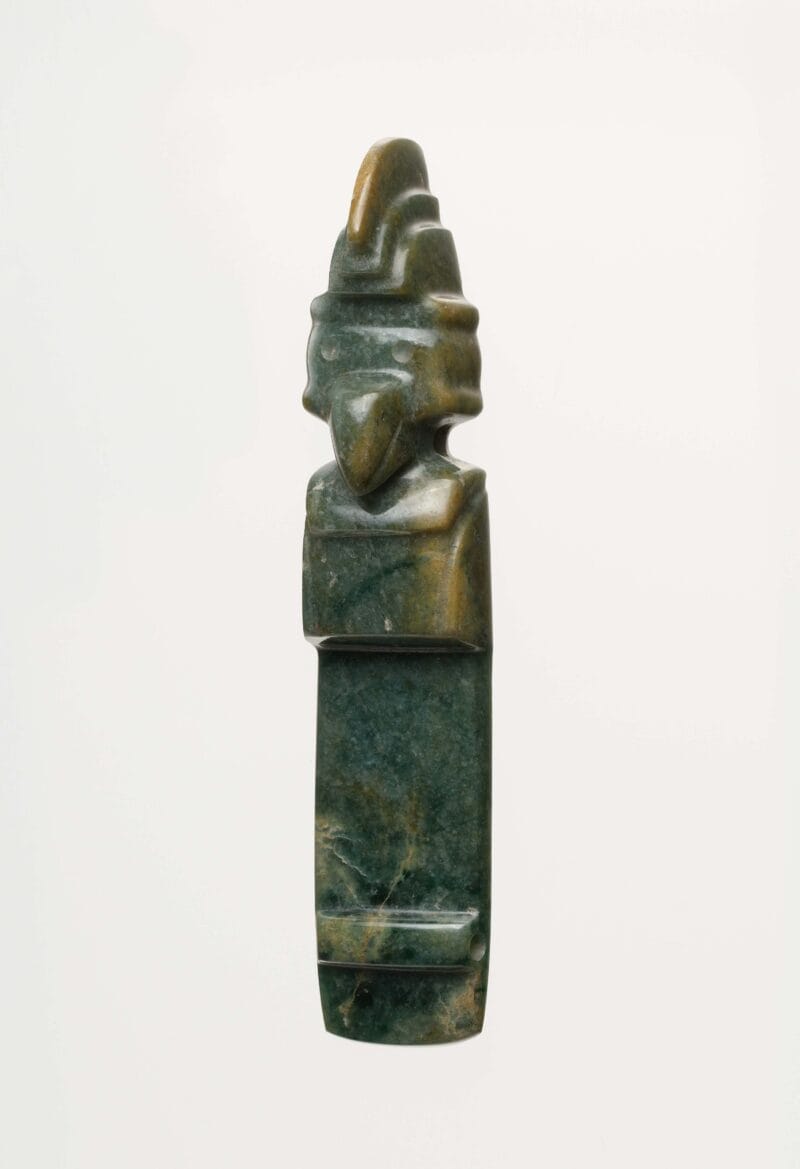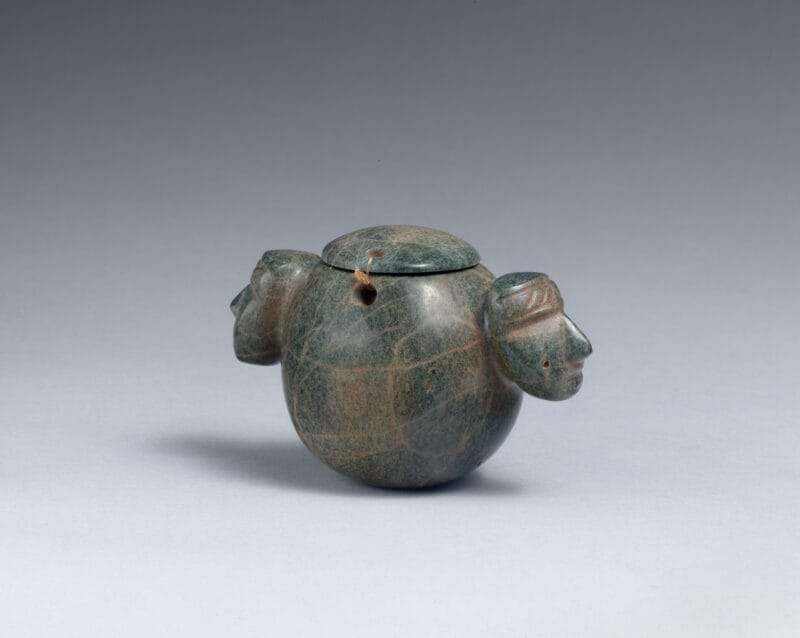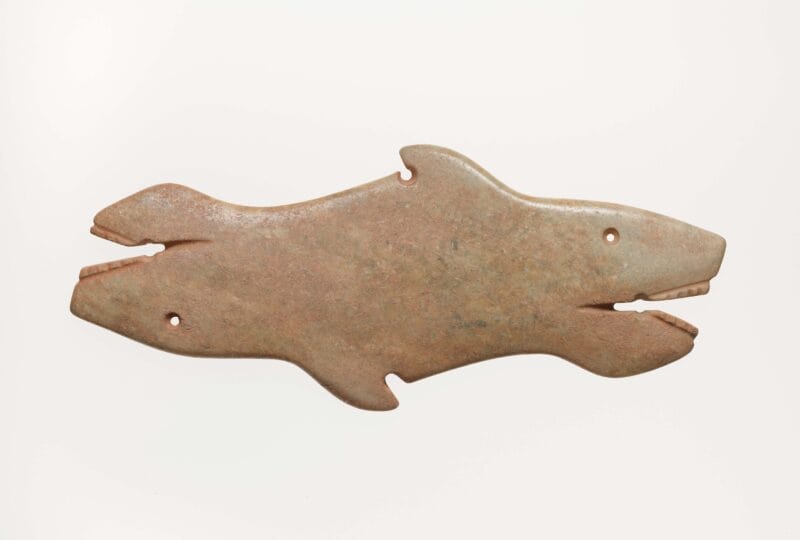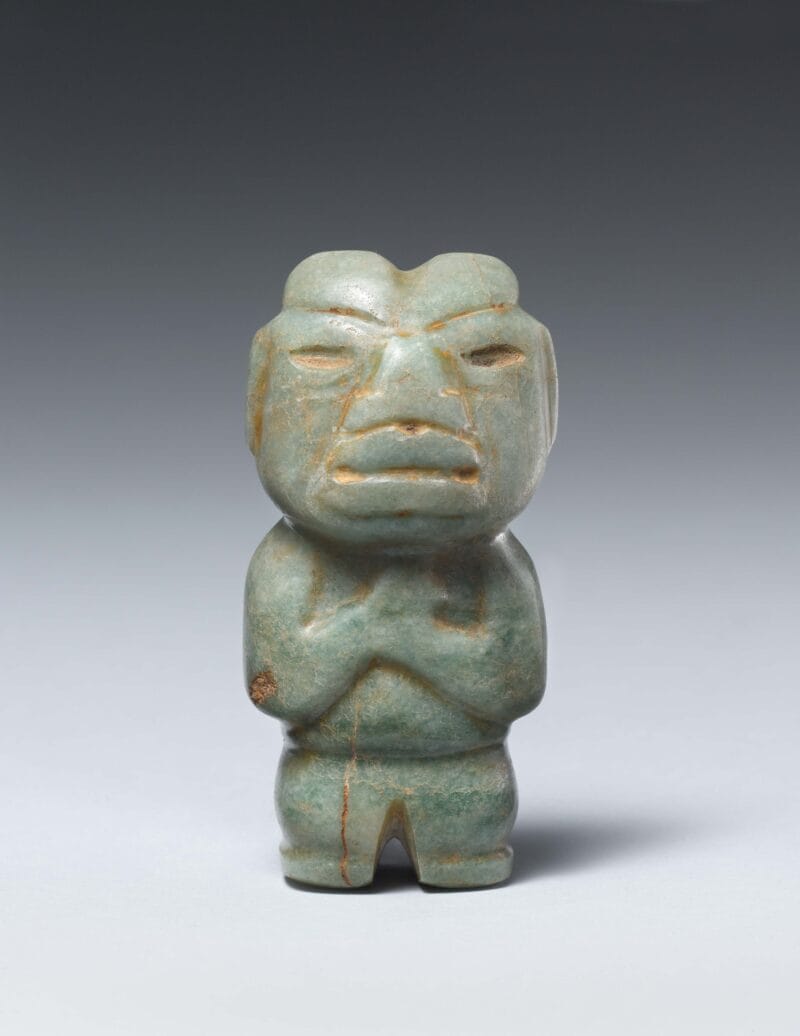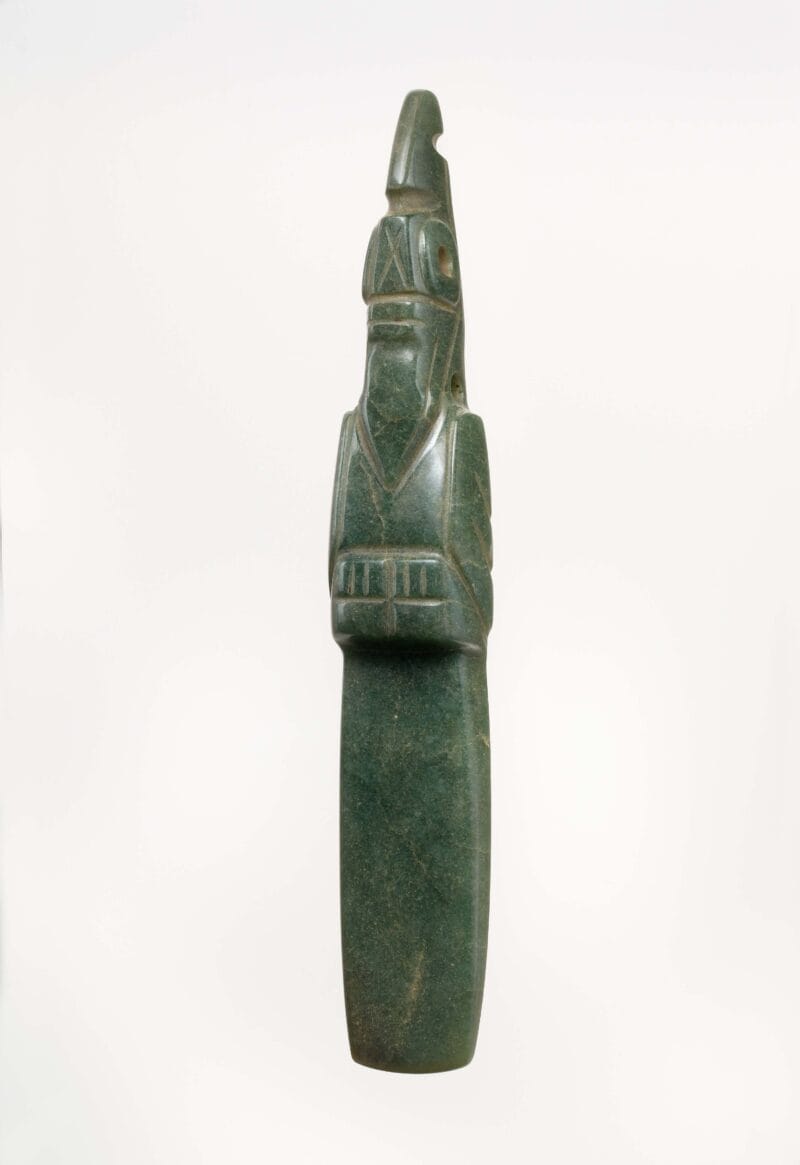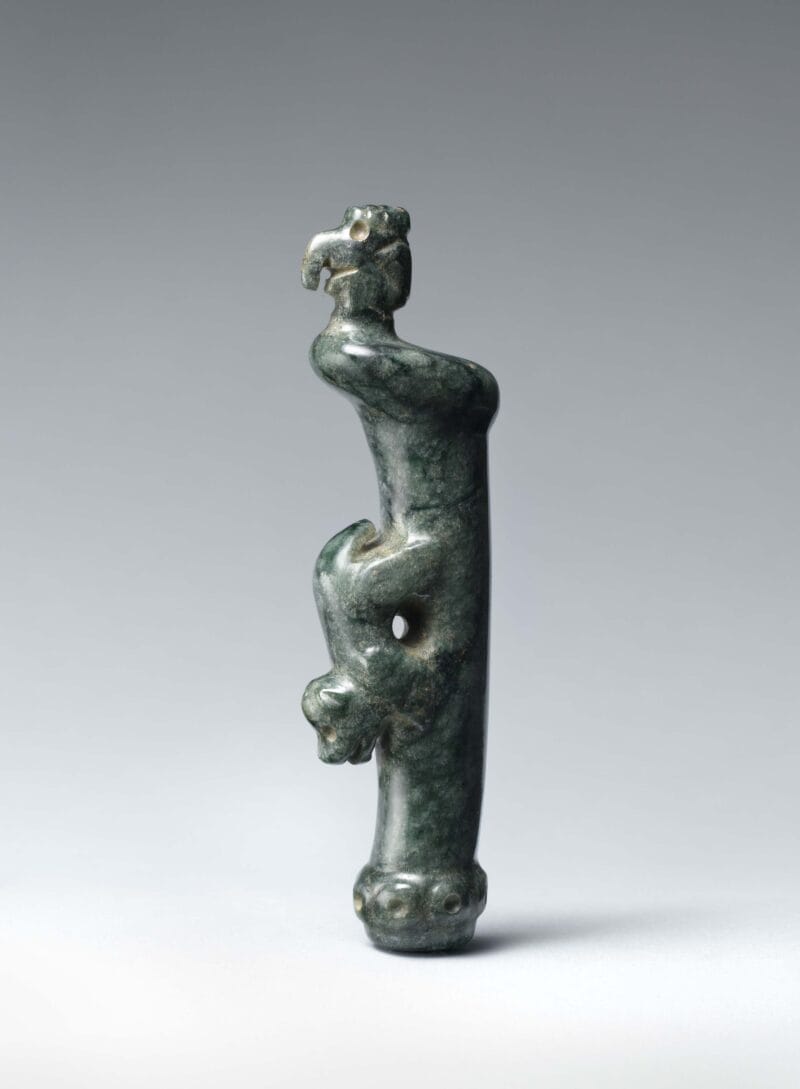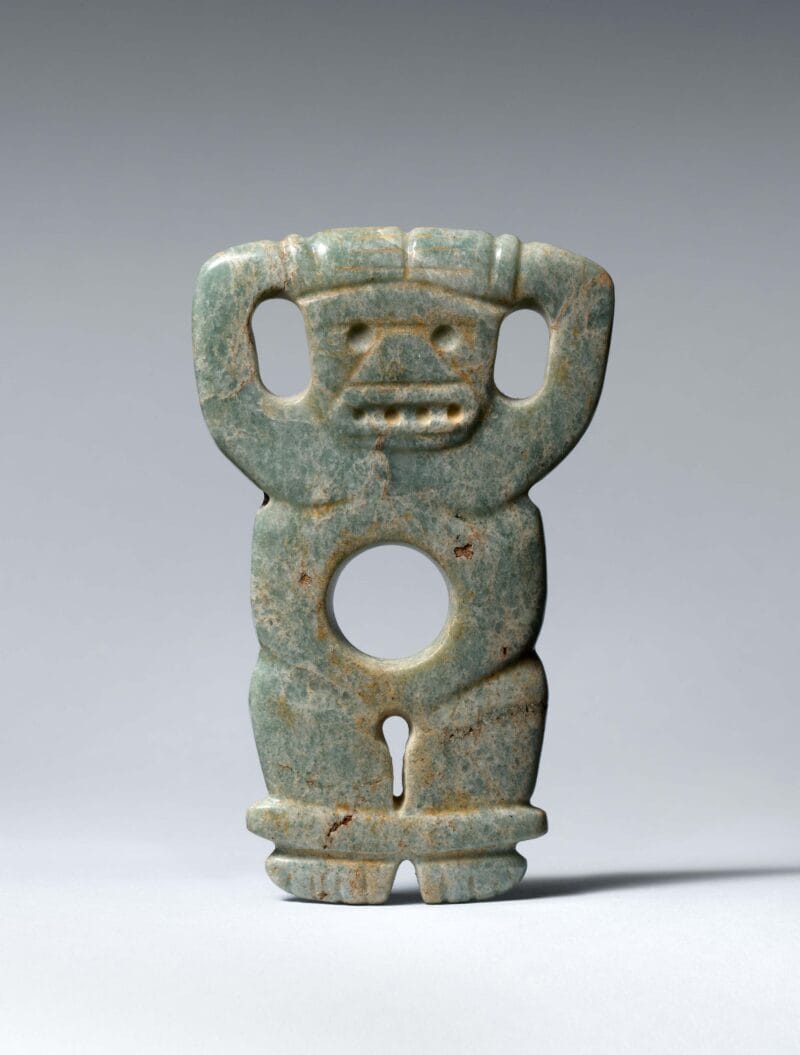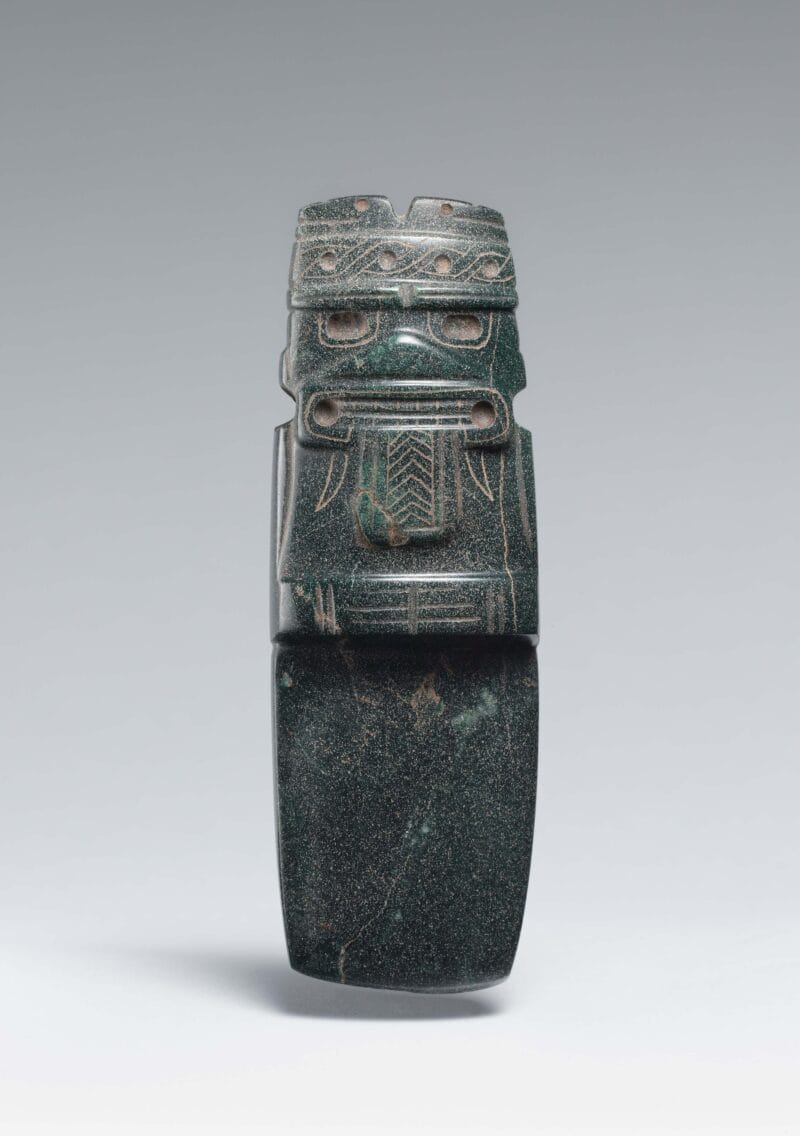
About the Object
Dark green jade pendants were often carved by their unknown creator(s) by recycling them from an earlier object, usually a celt, or hand axe. The work here likely displays an anthropomorphic Costa Rican axe-god, examples of which were most commonly found in burial sites possibly accompanying the remains of community leaders. The figure wears a headband decorated with a woven motif. The figure’s facial features are highly stylized, displaying a triangular nose, rectangular and wide-open mouth with prominent teeth, and thick circular bands around the hollow eyes. The axe-god’s arms cling to its abdominal area, where the likely clasping hands are only suggested by a series of vertical cuts on the figure’s forearms. Directly below the figure’s clasping arms, the celt blade occupies approximately half of the figure’s total length. Finally, there are two drilled holes on each side of the head through which this object could be suspended and worn.
Additional Information
The archaeological division of Costa Rica falls into three style regions: the Guanacaste–Nicoya (northwest), the Central Highlands–Atlantic Watershed (east), and the Diquis (southwest). Jade was abundantly available to pre-Columbian Costa Rican traditions from sizable jade deposits. These were highly prized and exported, and have been uncovered throughout Central America as far as southeast Guatemala, in Montagua River Valley. Significantly, ancient Costa Rican communities possibly connected jade to symbols of fertility.
Spencer Throckmorton Collection, New York, NY;
Gift to The Jan T. and Marica Vilcek Collection, 2003-2010;
Gift to The Vilcek Foundation, 2010;
